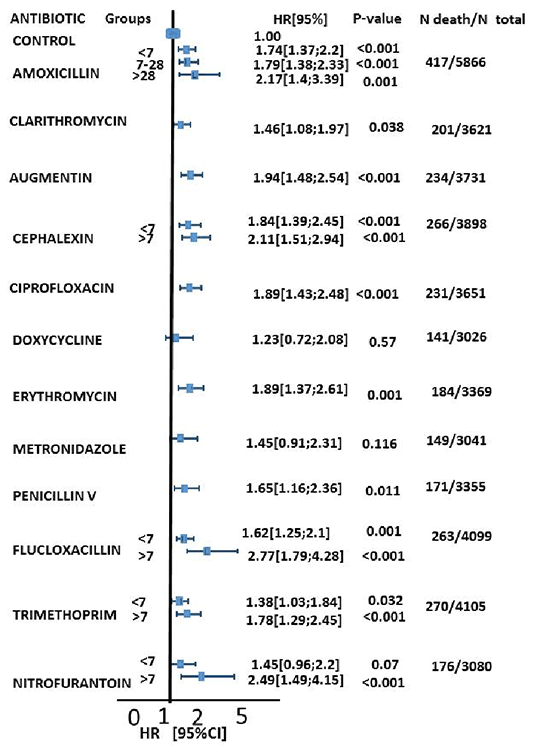Epidemiologic Study of Antibiotic Use in Treated Hypertensive Patients - Impact on Mortality In this observational study, we studied the impact of concurrent antibiotic treatment and the risk of mortality in treated hypertensive individuals. Hypertension is a chronic disease with a high prevalence worldwide.(1) As infectious diseases occur commonly, antibiotics are potentially a major source of drug interactions with antihypertensive drugs.(2) Electronic linkage data of 10090 hypertensive patients selected 7560 patients who received antibiotics and 2530 controls during 2006 and 2009 with follow-up for 3 years. This study aimed to estimate the risk of all-cause mortality for each antibiotic and the impact of antibiotics on antihypertensive treatment adherence by comparing the prescription refill 1 year pre- and post- antibiotic therapy.
Beta-lactam antibiotics were the most commonly prescribed antibiotic followed by trimethoprim and clarithromycin. During the 3 year follow-up period, exposure to any antibiotic was associated with 612 all-cause deaths and 63% (1.63[1.31;2.02];P<0.001) higher risk of mortality. The forest plot shows the analysis for each antibiotic separately, demonstrating a consistent increased mortality apart from doxycycline and metronidazole. Angiotensin converting enzyme inhibitor (ACEI), angiotensin receptor blocker (ARB), β-blocker (BB) and calcium channel blocker (CCB) showed minimal drug interactions with antibiotics as demonstrated by persistence of over 70% and low discontinuation in a year following antibiotic therapy. Antibiotic therapy of any duration is a marker of increase risk in hypertensive patients and has minimal impact on the persistence of ACEI, ARB, BB and CCB. Consequently, antibiotic therapy of any magnitude is a marker of high risk among hypertensive patients and the implications of this merits further study. (1)Kearney PM et al. (2005) Lancet 365: 217-223. (2)Pirmohamed M et al. (2004) BMJ 329: 15-19.
|


